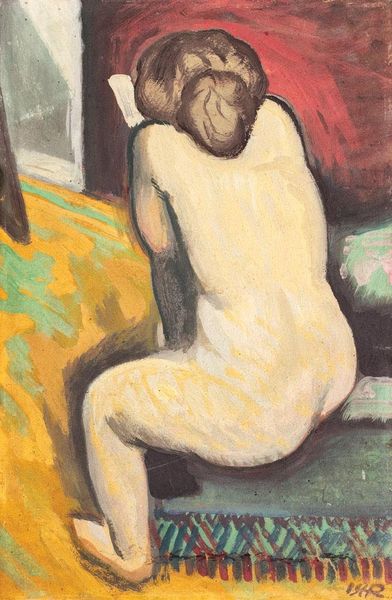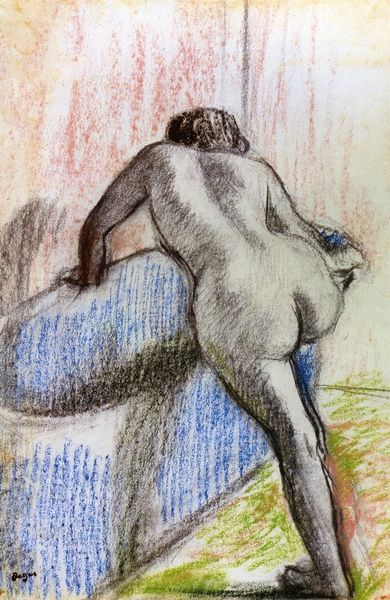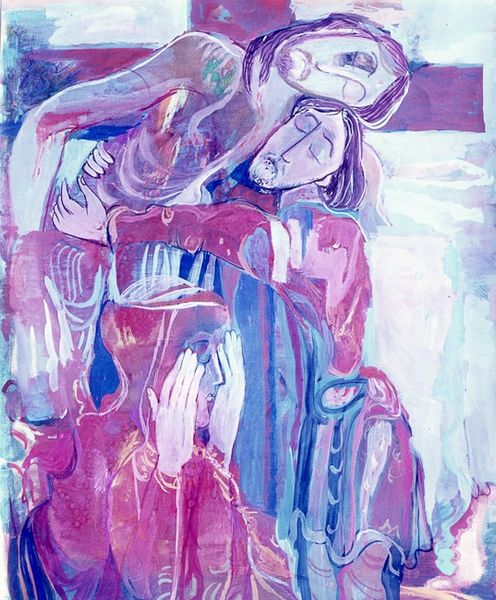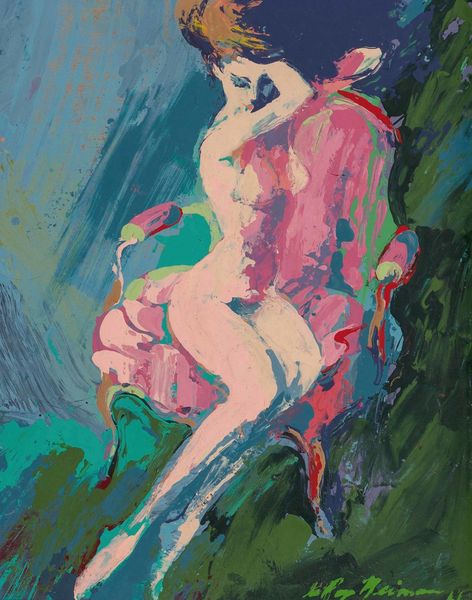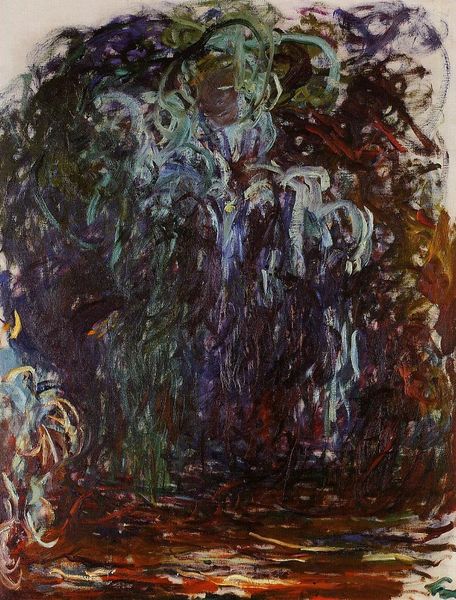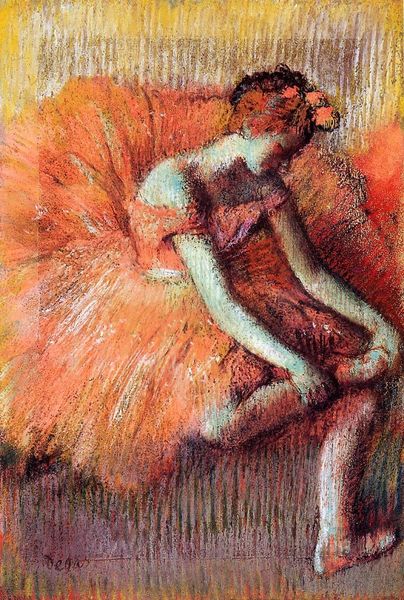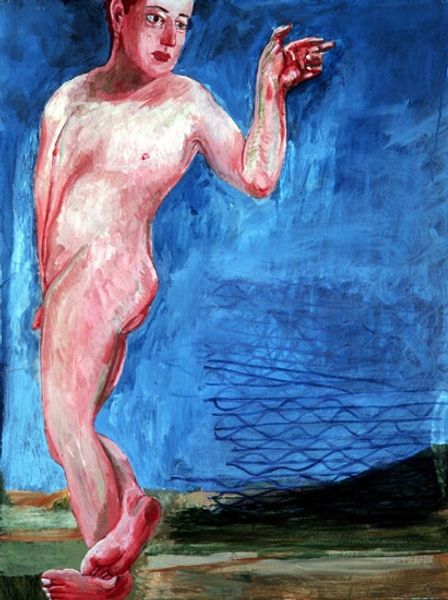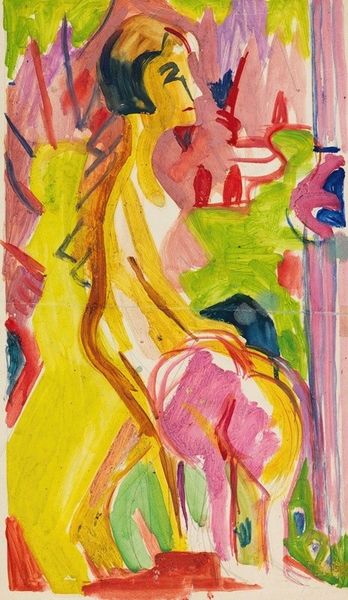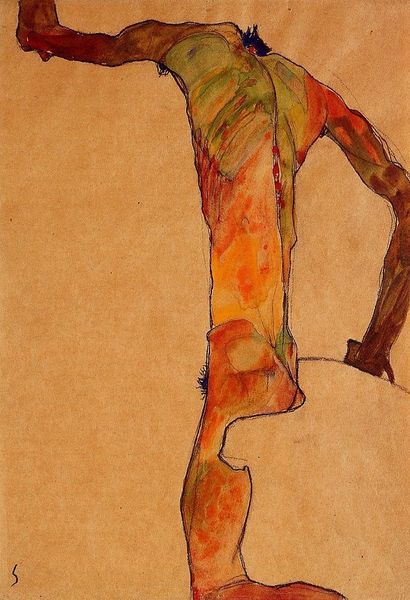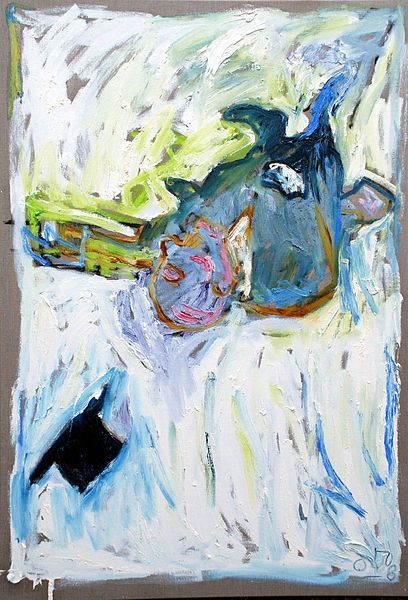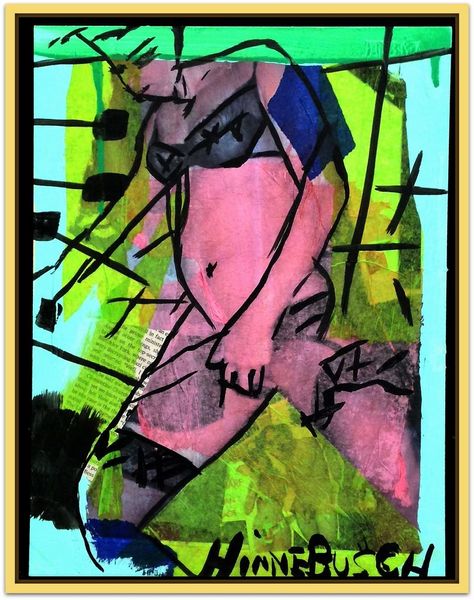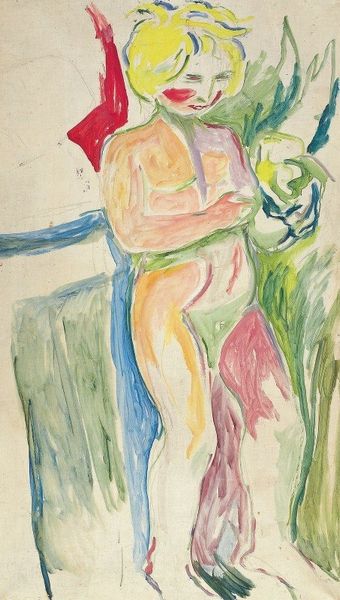
painting, plein-air, impasto
fauvism
painting
impressionism
plein-air
neo-impressionism
landscape
impressionist landscape
figuration
impasto
female-nude
acrylic on canvas
nude
Dimensions: 41 x 17.25 cm
Copyright: Public domain
Editor: Here we have Theo van Rysselberghe’s "Nude from Behind, Fixing Her Hair". It appears to be an oil painting using the impasto technique. What strikes me is the artist's almost scientific approach to color and light, combined with the intimate subject matter. What's your take? Curator: What grabs me immediately is the labor inherent in this piece, specifically the process of production and van Rysselberghe’s chosen method of impasto, isn’t it? Note the thick application of paint. How does this materiality speak to the artistic movements of the late 19th century, when there's this shift toward exploring texture and surface in painting? Editor: I see what you mean. It’s like the paint itself is part of the subject. Is he making a comment on the act of painting as a kind of…labor, similar to the woman fixing her hair? Curator: Exactly! We can also consider the social context. Think about the availability and cost of pigments during this period. Ultramarine, for example, was incredibly expensive. How does the choice of colors, beyond their aesthetic value, hint at the artist's access to resources and the art market of his time? Editor: That’s a great point! So, it's not just about the finished image, but about unpacking the resources, the production, and the market forces at play. The 'nude' isn't just an aesthetic form but the culmination of all these material processes and social factors. Curator: Precisely. This perspective can shift our understanding from simply admiring the aesthetic to interrogating the means and context behind its creation. It challenges the separation of 'high art' from more traditionally devalued 'crafts', which involved extensive work with material. Editor: I see, it encourages us to question not just what we are looking at, but how and why it was made in the first place. Curator: Indeed, the process becomes an integral part of understanding the artwork's cultural and historical weight.
Comments
No comments
Be the first to comment and join the conversation on the ultimate creative platform.
